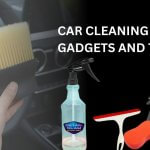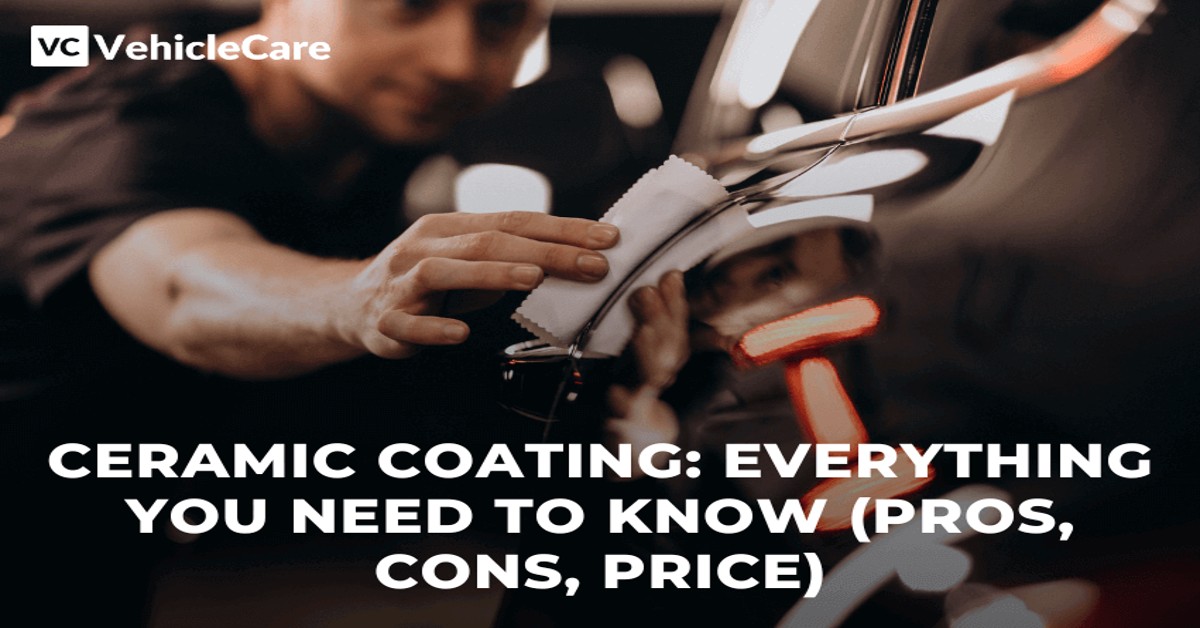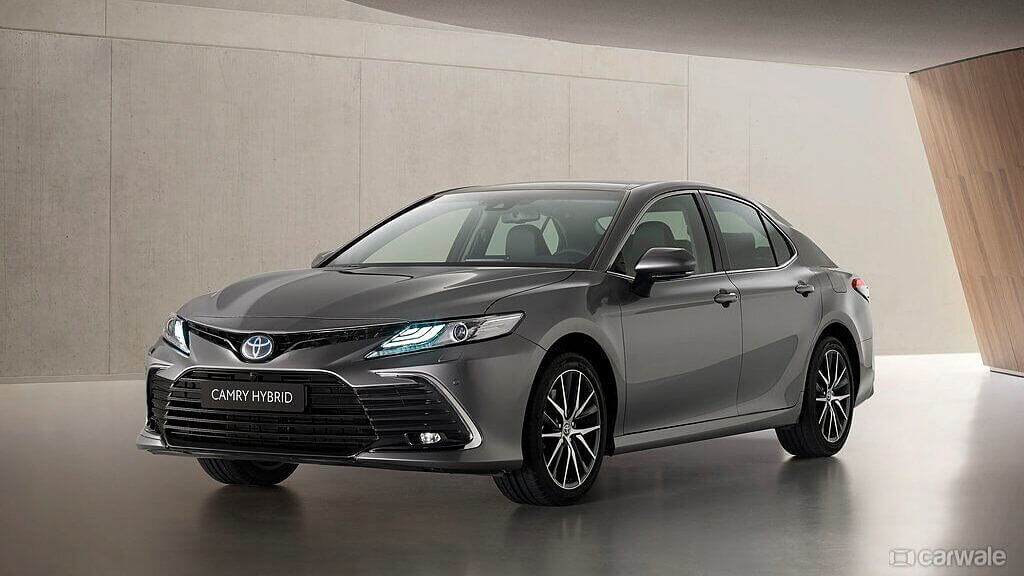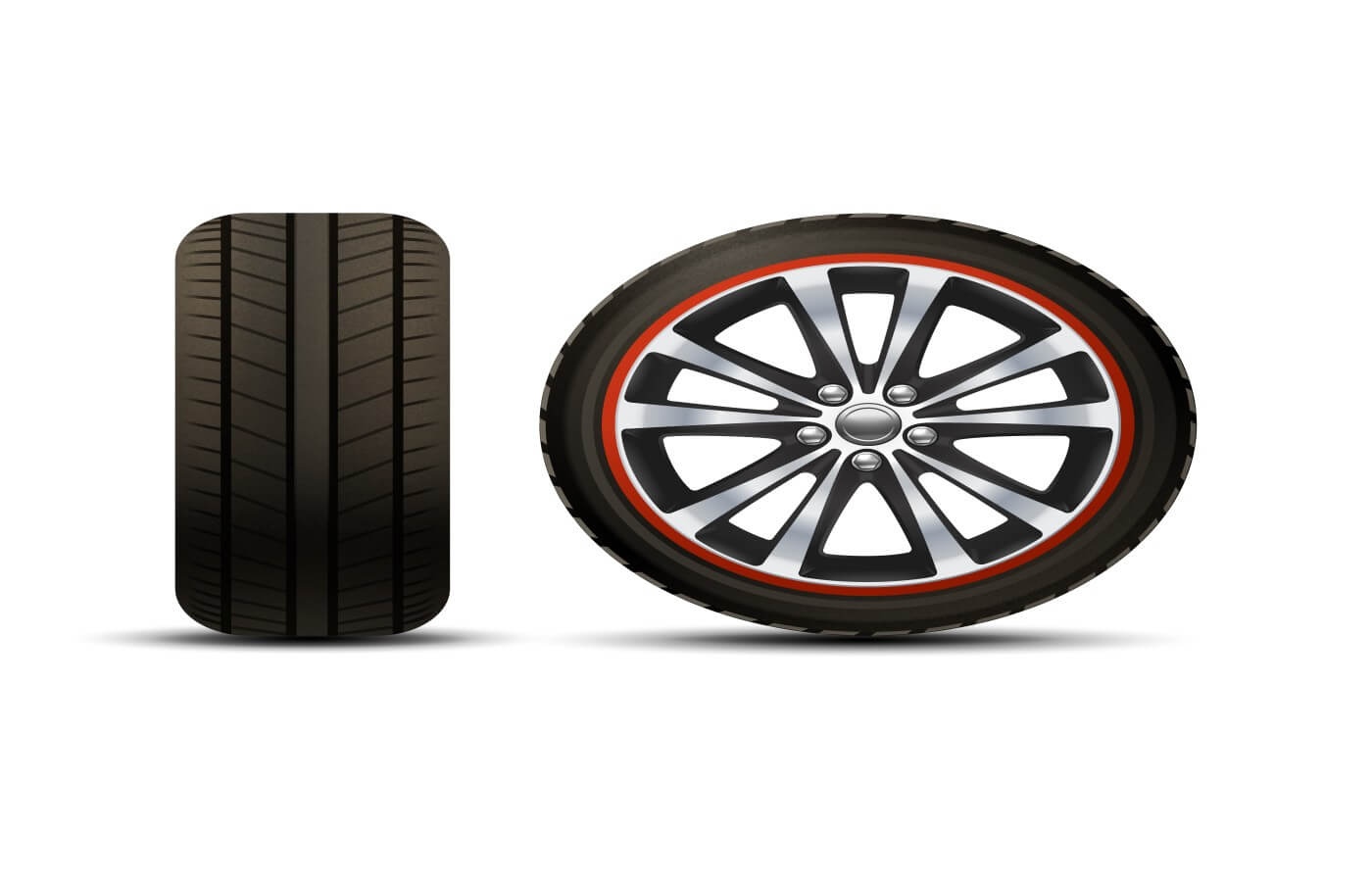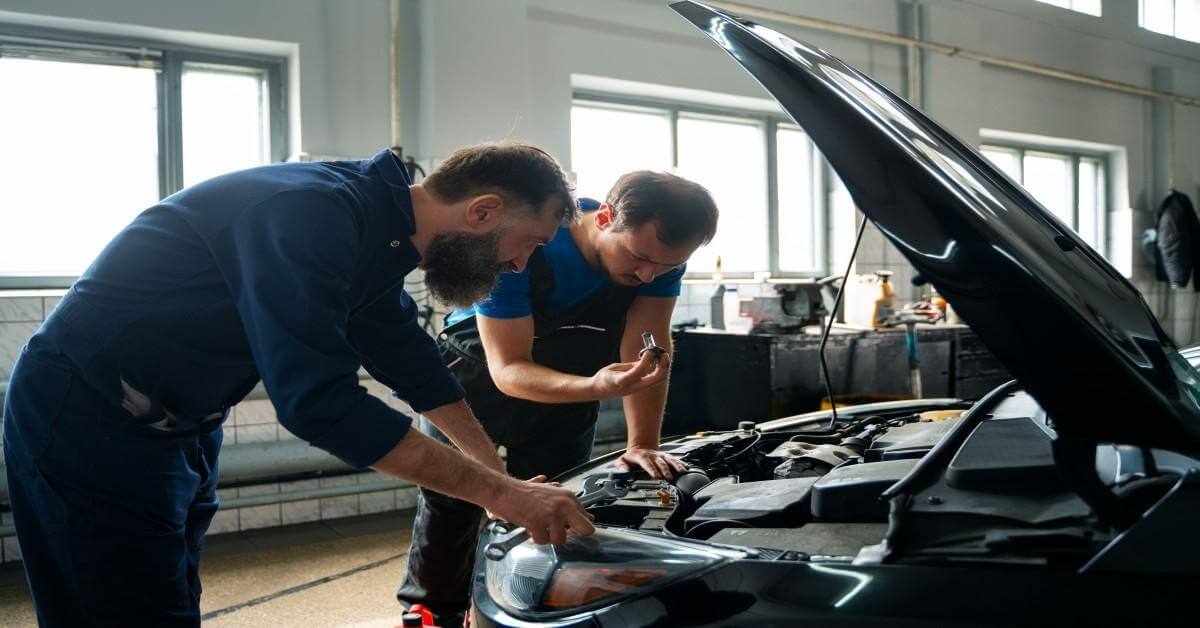A chemical polymer solution that is applied to the exterior of a vehicle to protect it from external paint damage is known as an industry-grade ceramic coating. It is typically applied by hand and blends with the paint of your vehicle, adding a hydrophobic layer of protection. The car’s factory paint job is unaffected by this chemical bonding and the formation of a new layer.
While many car enthusiasts and even detailers believe that ceramic coating is an alternative to the clear bra (paint protection film), it is an alternative to waxing. The goal is to keep dirt, grime, and stain marks from appearing on the paint job and destroying the clear coat.
Ceramic coating, also known as Nano-ceramic coating, can be a permanent or semi-permanent solution to your problems, depending on the coating and polymer used. It does not degrade in normal atmospheric conditions such as rain or summer due to its chemically intrinsic properties.
Table of Contents
Best Ceramic Coating ideas
Best ceramic coating brands today are Modesto, Nano Lex, Quartz, Ceramic Pro, and IGL Keno. They are widely used in and around the Houston area, as well as throughout Texas. But, before you decide if you want to give it a shot, let’s dig a little deeper.
Is ceramic coating beneficial to your vehicle?
Yes, ceramic coating for cars provides excellent paint surface protection. It not only extends the life of the paint but also gives it a gleaming shine as if the vehicle had just rolled off the assembly line.
Is it worthwhile to invest in a ceramic coating?
Ceramic coating is well worth the investment. It offers excellent resistance to environmental hazards and corrosion. Investing in ceramic coating services is a good way to ensure the paint integrity of your vehicle for a long time.
Down is the approx. price list:
Ceramic Coating Price List in INDIA:
| Car service list | Price |
| HATCHBACK | 14,999 |
| SEDAN | 17,999 |
| SUV | 23,999 |
Which ceramic coating is the best?
Detailing Devils offers the best ceramic coating 9H DNA service in the form of ceramic car coating. This is by far the best ceramic coating with 9H hardness protection against the harshest environmental elements. It is regarded as the most advanced ceramic coating for the exterior paint surface of a vehicle. The 9H DNA (Diamond Nano Armor) coating is a perfect Nano-ceramic coating with dual-layered cross-linking polymer molecules. It gives a vehicle the ultimate shine and protection. It is available in three variations.
Reload: One-year warranty
Pro: It comes with a three-year warranty.
How long does it last?
Warranty period: 5 years
DNA Evolution is a car coating that offers a 7-year warranty on the shine of the vehicle’s surface paint. Detailing Devils has recently introduced Voodoo, a self-healing coating. This ceramic coating can self-heal in the presence of hairline scratches and micro swirls.
Is ceramic coating superior to wax?
What’s going on? Ceramic coating is far superior to wax and sealants. There is no denying that waxes have long been used as an effective product. Many people have used it to give their vehicle a spectacular shine. However, the life of wax is much shorter than that of ceramic coating. This may necessitate purchasing the wax, again and again, to restore a new shine to your vehicle. It was a complete waste of time and money. However, depending on the coating and its application, the ceramic coating can last for 1 to 5 years.
How should a ceramic coating be applied?
The process of applying a Nano-ceramic coating to a car or bike is not simple. There aren’t many do-it-yourself products that encourage you to apply the coating yourself. To be applied correctly, ceramic coatings require professional training and practice; otherwise, the entire thing will end up in a shiny mess. But only to pique your interest. Ceramic coating is typically applied to the entire surface of a vehicle with a slow and even application of an applicator cloth or duster. The process is slow and laborious to ensure that the ceramic coating is applied evenly and without leaving any oxidation.
Ceramic coating procedure, step by step
This step-by-step guide will show you how to properly install Nano-ceramic coatings on your car, whether you’re a professional detailer, an aspiring professional detailer, or a DIY car enthusiast.
Before you begin applying the ceramic coating to your car, make sure you read and understand all of the manufacturer’s instructions. You can watch this video to learn how to apply the ceramic coating to your car in a nutshell.
The Preparation Work is the first step.
This cannot be emphasized enough. The Prep Work stage is where you apply a ceramic coating, wax, sealant, or even PPF. Preparation work, in general, entails the following:
- Washing the vehicle thoroughly to remove dirt, debris, and other contaminants from the surface.
- To remove contaminants stuck on the paint, use a clay bar, clay mitt, or clay towel.
- Correction and polishing of the paint:
One of the most common misconceptions about ceramic coatings is that they improve the paint surface by removing swirls, scratches, and faded paint. Ceramic coatings are paint protectants, which means they shield the existing paint surface from damage. A ceramic coating will amplify or magnify scratches and swirls in the paint. As a result, it is always recommended to perform paint correction before applying the ceramic coating.
Step 2: IPA cleaning with nanotechnology
Isopropyl alcohol (IPA) is a type of alcohol. It’s not the ordinary IPA you’d find in a pharmacy; it’s a Nano-based IPA solvent with a degreaser.
Because ceramic coatings are based on nanotechnology, Nano-based IPA cleaners should be used to remove all polishing oils and ensure that the ceramic coating bonds properly.
Step 3: Location and conditions of application
After you’ve completed the prep work and pre-wipe cleaning, you can begin applying the ceramic product. However, certain application areas and conditions must be discussed before proceeding.
To begin, the ceramic coating must be applied in a dust-free environment. If even a small amount of dirt adheres to the paint while applying the ceramic coating, it will be absorbed by the coat.
Second, the ideal temperature is between 21 and 28 degrees Celsius, with a humidity level of less than 50%.
Also, to get quality and long-lasting results, make sure to buy top-quality ceramic coating products in India.
Step 4: Coating the Surface with a Ceramic Coating
- Let’s move on to the application itself. Take the following steps:
- Before using, give the bottle a good shake.
- Wrap the suede cloth around the sponge applicator.
- Using a dropper, pour a few drops onto the sponge.
- Coat a 2ft X 2ft area of paint with the coating. Apply in a crisscross pattern to ensure you don’t miss any areas (first apply horizontally, then apply vertically).
- Wait for 30 to 60 seconds (depending on the temperature) until bubbles appear.
- Using a microfiber, gently remove the excess and level the surface.
- To shine, use a separate microfiber and buff it.
Tips: Inspect each section of the vehicle section by section. For leveling and buffing, use different microfiber towels. As you move along the vehicle, keep flipping the microfibers over to different sides.
Allow the vehicle to sit indoors for a few hours after applying the ceramic coating. It’s crucial to stay away from water and chemicals for a few days. A crystallization process occurs in the ceramic coating. It has amazing properties like hydrophobicity, shine, and luster, and protects against UV rays, color fading, and other environmental hazards once fully cured.
Benefits of Ceramic Coating
You can make a resilient solution out of anything that contains chemical compounds. Ceramic coating, on the other hand, is both permanent and easier to clean once applied. Aside from the obvious, there are a few other reasons to use it in your vehicle:
1) Protection from harmful UV rays
You can only imagine the harm that the sun’s harmful UV rays can cause to the paint job on your car. Your car’s paint will be protected from oxidation, fading, and wearing a dull appearance with a ceramic coating. If you park your car outside, this is critical.
2) Protection Against Chemicals
Chemical stains caused by acidic contaminants in the air are another source of potential car damage.
These contaminants will be prevented from bonding to the paint by a coating. With the city’s air pollution levels only rising, ceramic coating can be a huge help.
The hydrophobic nature of the material, as well as the ease with which it can be cleaned
Washing your car becomes a chore when it comes to waxing and other types of details. You don’t have to worry about the polymer wearing off with ceramic coating. (Incidentally, completely removing it necessitates another process involving polishing and wet-sanding.)
It not only blends with your car’s paint, but it also repels water. This means that any dirt or grime containing water will bead on the surface and eventually slide off. After a quick jet wash, you’ll have a spotless, ageless car.
3) Candy-Colored Gloss
This is where you’ll find the aesthetics that all car owners will adore. Ceramic coating, like a car bra, adds gloss and depth to your car’s paint. It will give your car a glossy appearance, bringing out the best in the original paint job.
Have all of these advantages revealed the truth about the ceramic coating? Its popularity in and around the Houston area has only grown in recent years. Both user and auto industry expert feedback has been extremely positive.
A look at our records over the last twelve years at Viv Auto Detailing gives us a good idea of car owners’ general willingness to try out this superb protection for their vehicles.
Disadvantages of Ceramic coating:
Every product on the planet has flaws. It is up to us to decide whether they are deal-breakers or not. These aren’t exactly flaws; they’re just things that ceramic coating doesn’t promise to do.
Scratch and Swirl Mark Protection for All Types of Scratches and Swirl Marks
Ceramic coating will not protect your vehicle from common threats such as scratches, swirl marks, and rock chips. Despite its blending properties, it retains paint characteristics. As a result, you should continue to expect your vehicle to be subjected to these common, unfavorable elements.
You should use a more advanced paint protection film to avoid scratches and chipping.
1) Water Spotting Protection
Water-based contaminants, as previously discussed, will bead on your car’s surface after the application of the ceramic coating and eventually slide off. They do, however, contain natural minerals and soluble particles that will remain on the surface after the water evaporates.
Ceramic coating will not remove the water spots that result, which will necessitate a much more hands-on approach.
2) Get Rid of the Need for Car Washes
You will still need to wash your car regularly. A layer of ceramic coating does not grant your car the ability to self-clean. While we all wait for a miracle product to do that, let’s look at the bright side of ceramic coating for the time being.
What is Teflon coating and how does it work?
Teflon is a synthetic fluoropolymer also known as poly-tetra-fluoro-ethylene (PTFE). Teflon, a well-known brand name for PTFE-based formula, is owned by Chemours, a DuPont spin-off. Teflon is the same material that is used in nonstick cookware and pans in the home.
For those looking to protect their prized four-wheeled investment, automotive Teflon coating is a cost-effective option. When properly applied, Teflon coatings are typically 0.2 microns thick and can last up to 6 to 8 months. If taken care of, even more. The Teflon coating on your car protects it from scuffs and reduces surface swirl marks.
Is Teflon a good coating for my car?
Are you in the market for a new vehicle? Make a demand for a free Teflon coating. Teflon coating is usually included as a bonus with most dealers.
Teflon coating is a good way to protect your car’s paint. Teflon coating shields your car from road chips, tar, rust, corrosion, and environmental impacts in addition to scratches and scuffs. Teflon does not form a molecular bond with paint but rather acts as a protective layer over it. This coating reduces circular swirl marks and gives the car’s paint a glossy sheen once applied.
Teflon’s only drawback is its short lifespan. Teflon can adhere to a surface for up to six months.
Which is better for my car: Teflon coating or Ceramic coating?
| PROPERTIES | CERAMIC COATING | TEFLON COATING |
| BASE | A compound made of Teflon or Polytetrafluoroethylene (PTFE). | Ceramic coating is a clear liquid polymer coat that is applied over a base coat. |
| compound | Non-stick cookware is a popular choice. | _ |
| THICKNESS | With a proper Teflon coat, the thickness is 0.02 microns. | Over the top coat of paint, a ceramic coating of 2 microns is applied. |
| protection | The coating protects against rust and scratches while also improving gloss. | UV rays, rust, scratches, and oxidation are all protected by a ceramic coating. Adds a layer of hydrophobicity. |
| durable | The Teflon coating can last anywhere from 6 to 8 months. | Ceramic coatings can last up to 2-3 years, and if applied properly, they can last the entire life of the vehicle. |
| COST | Teflon coating costs between $5,000 and $15,000*. | Ceramic coating is a costly option, costing upwards of $20,000*. |



